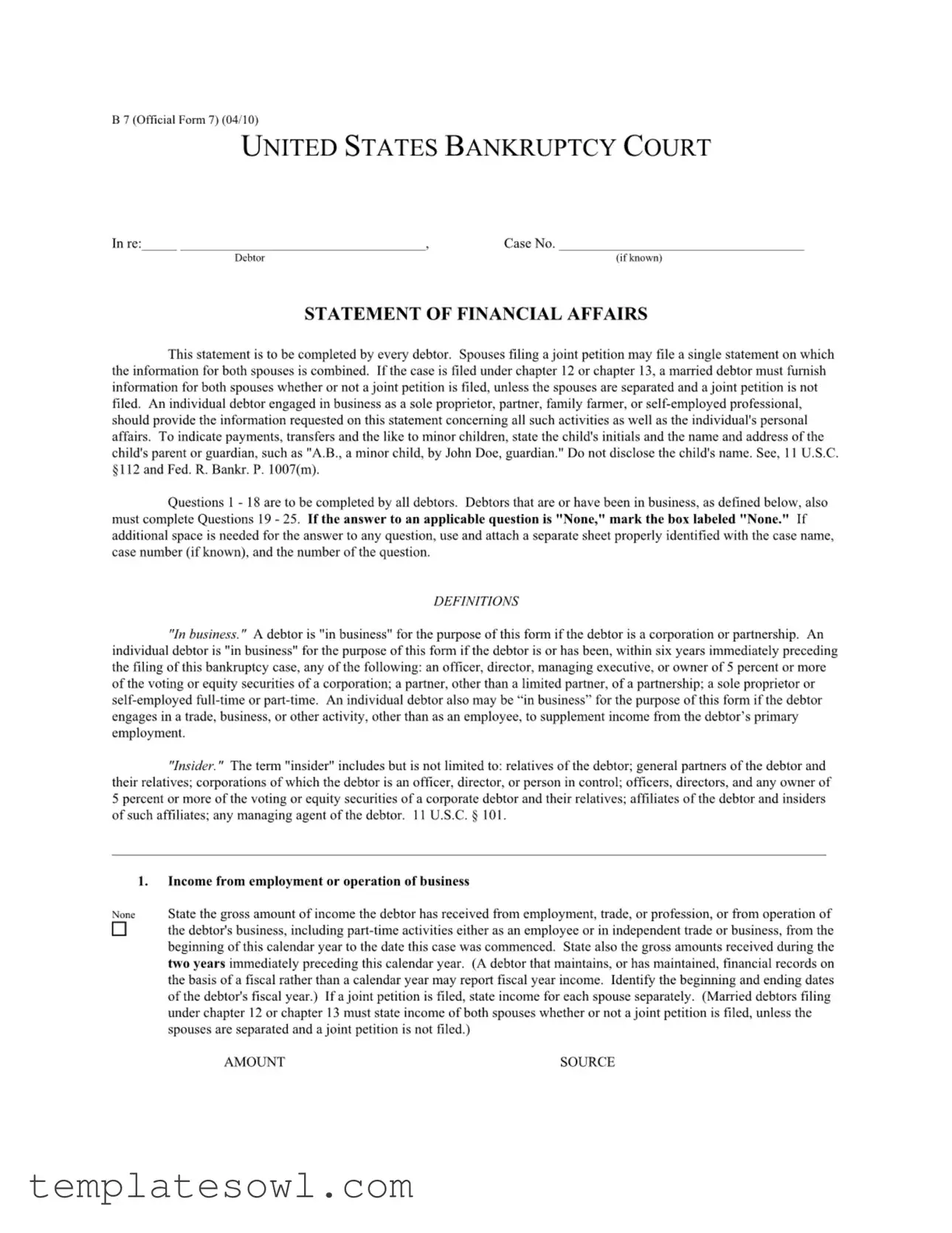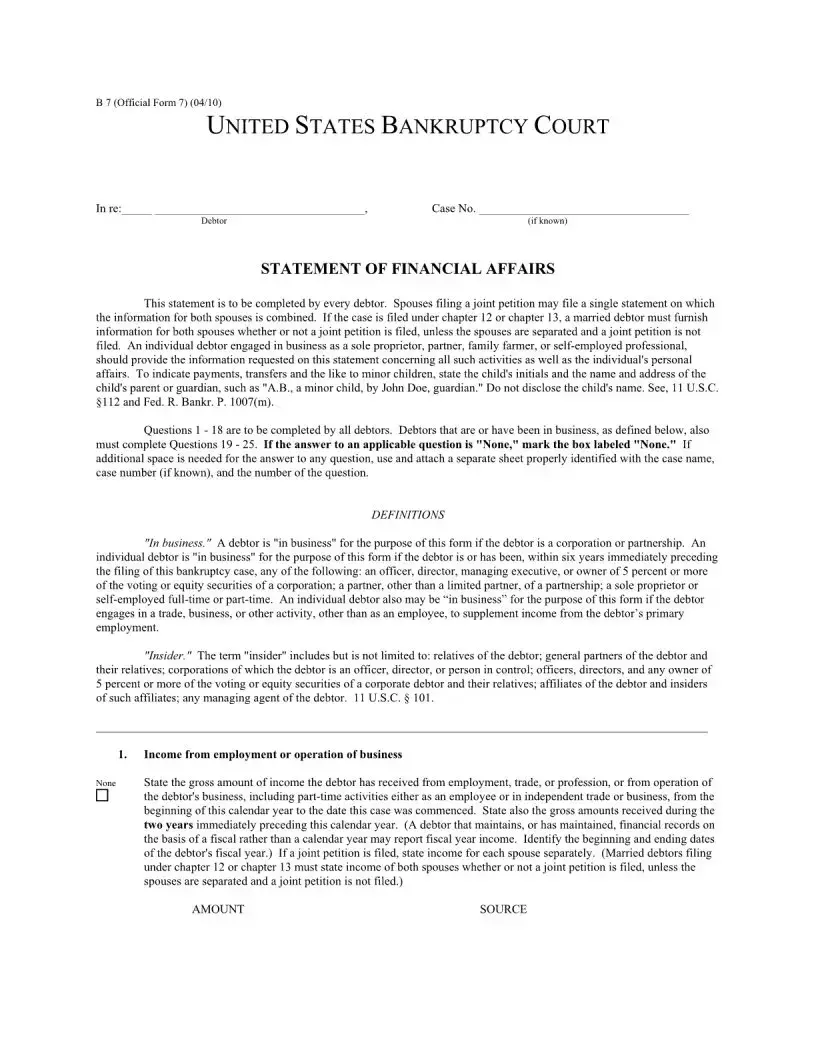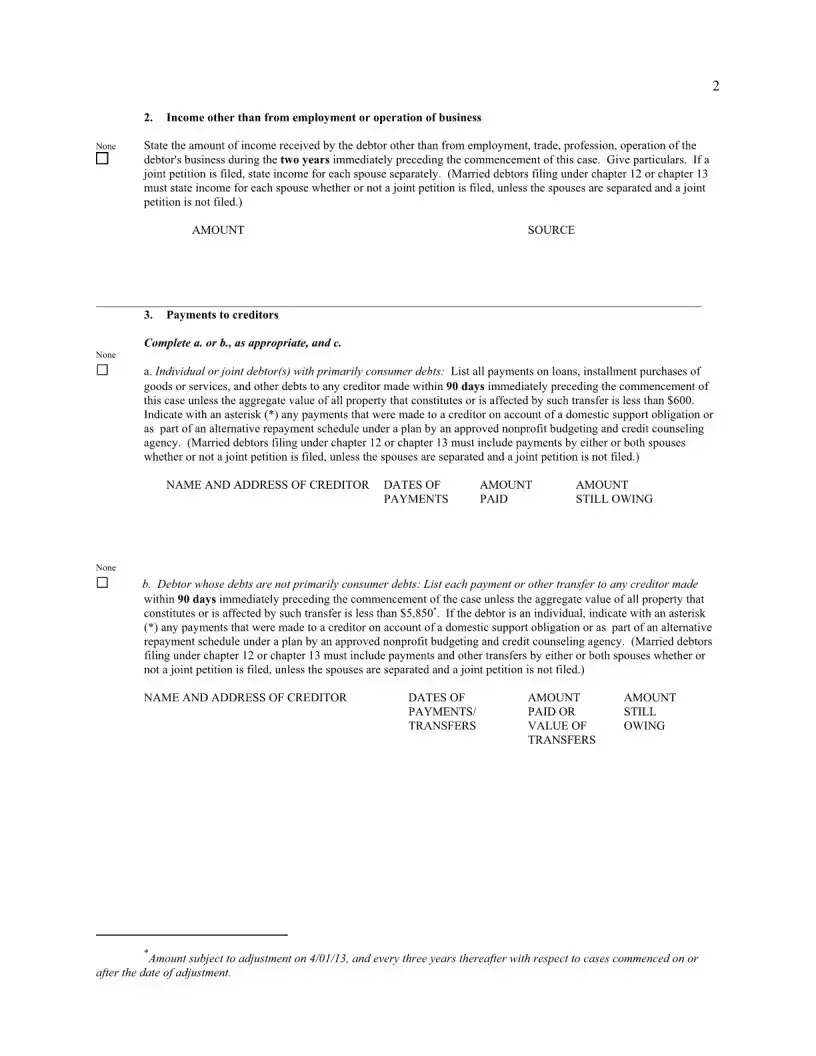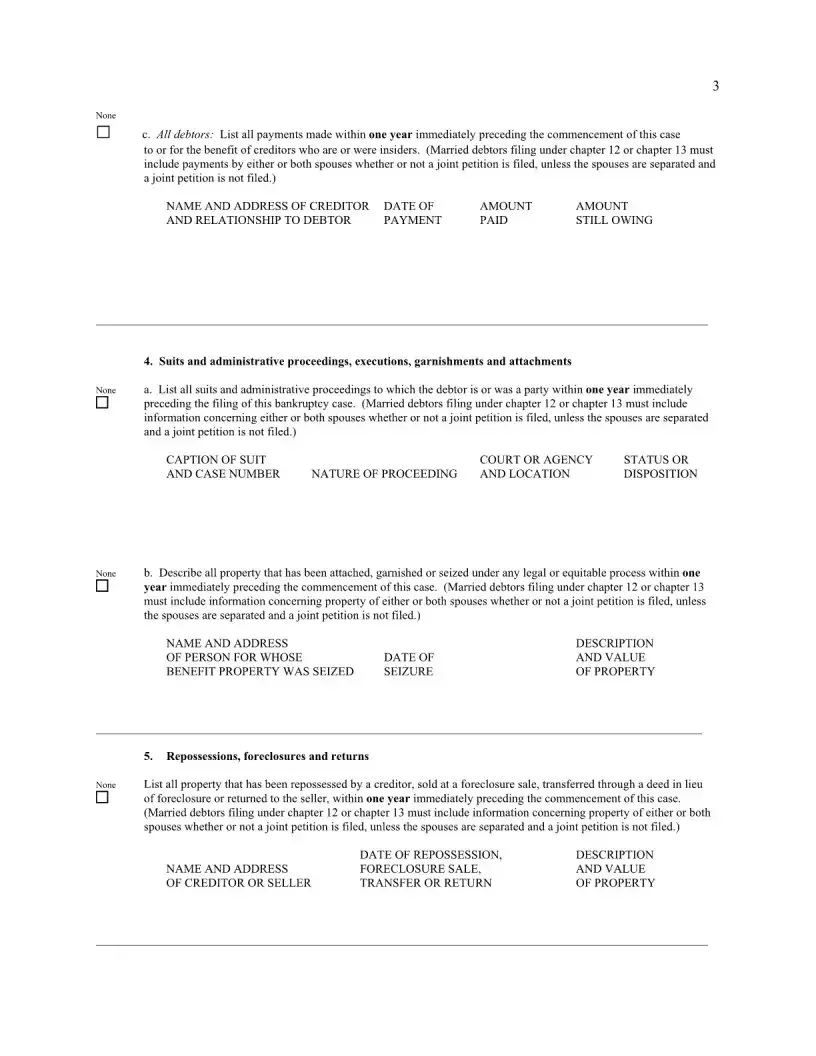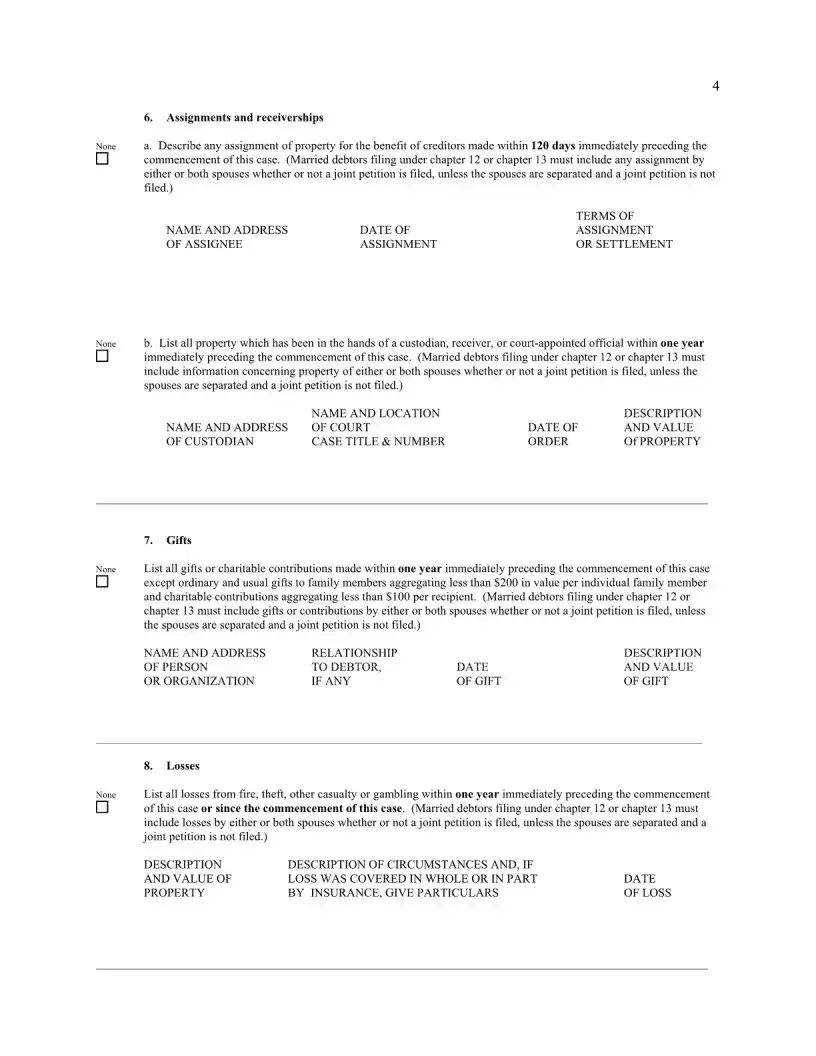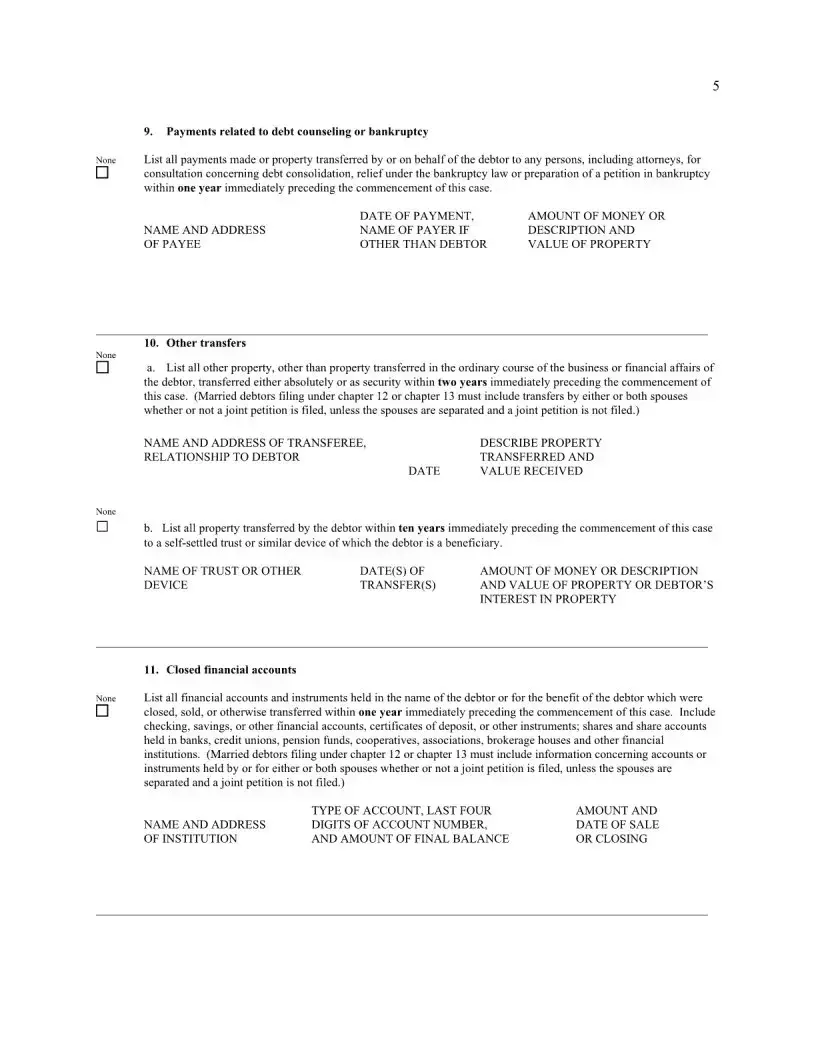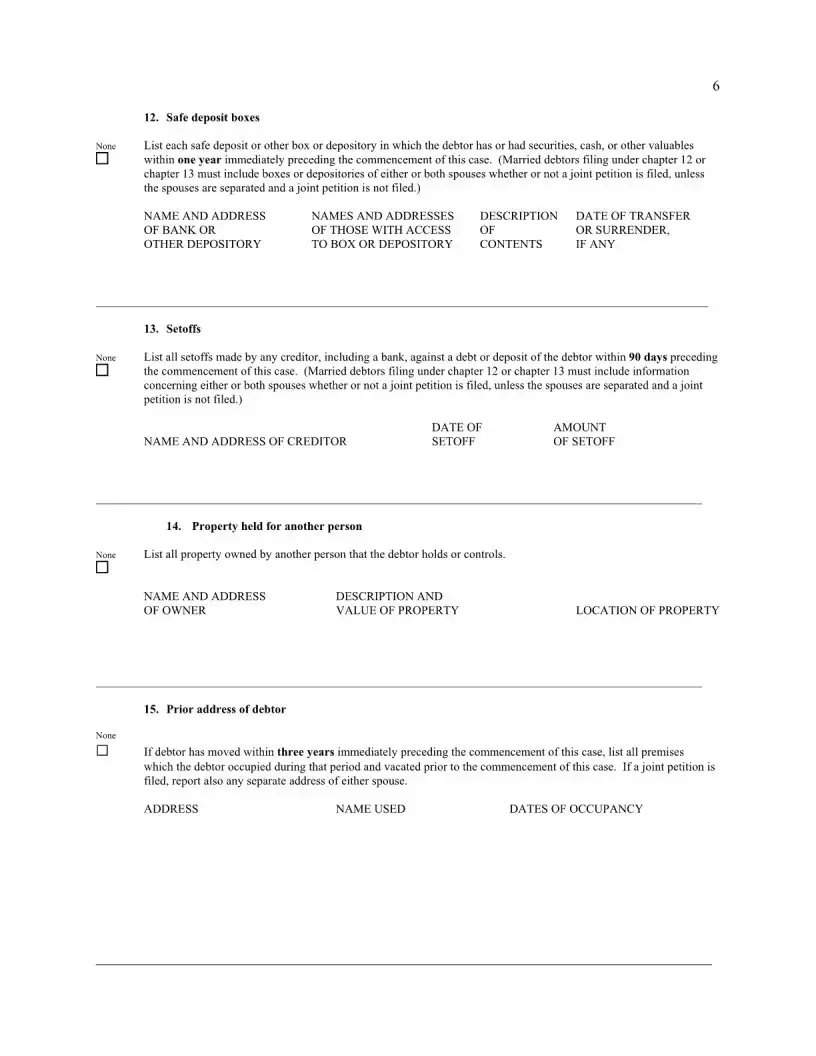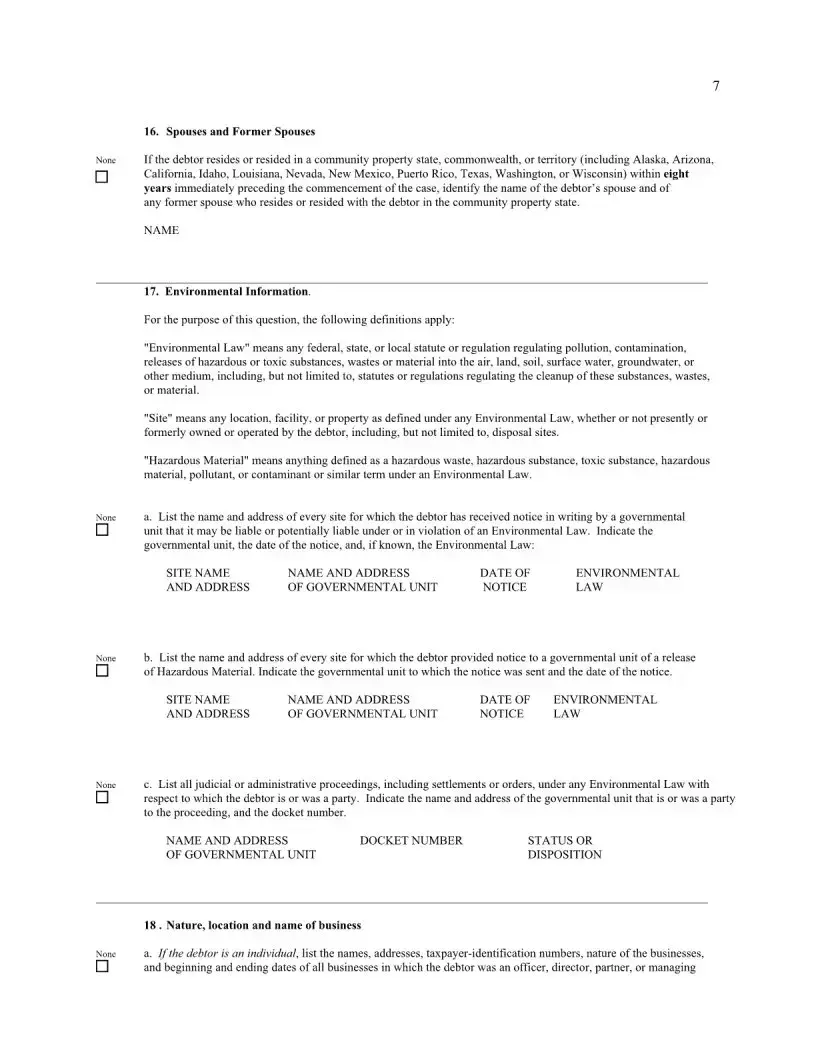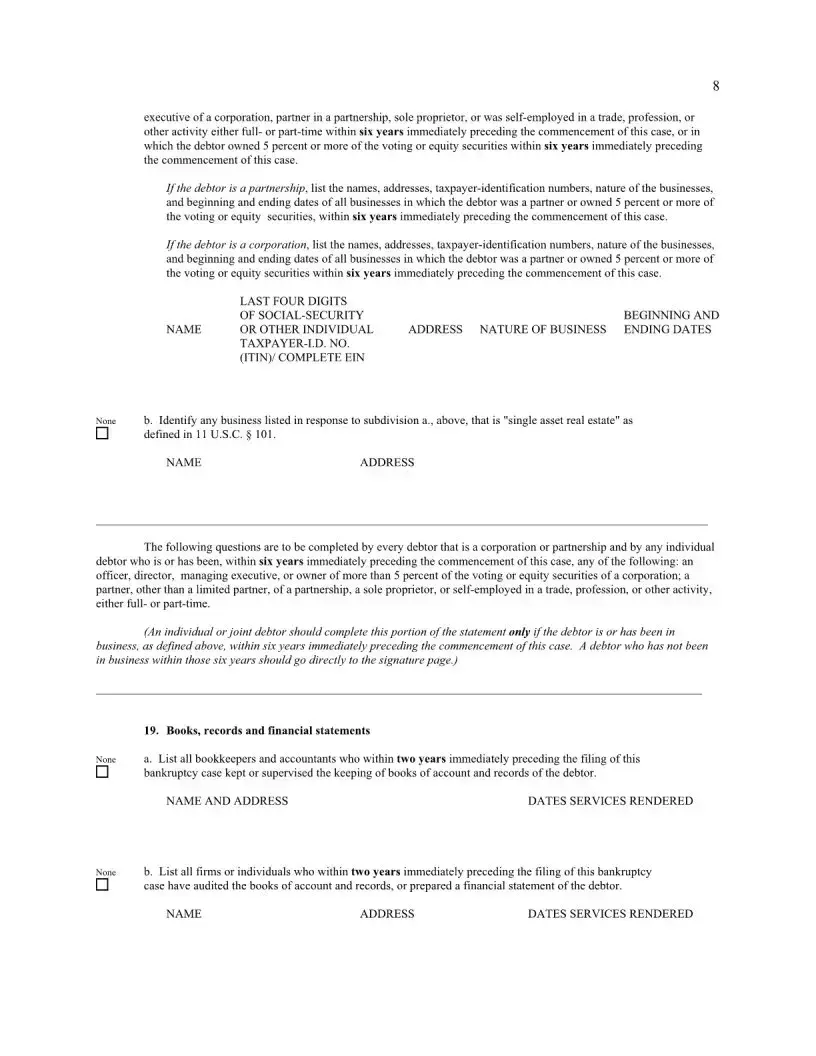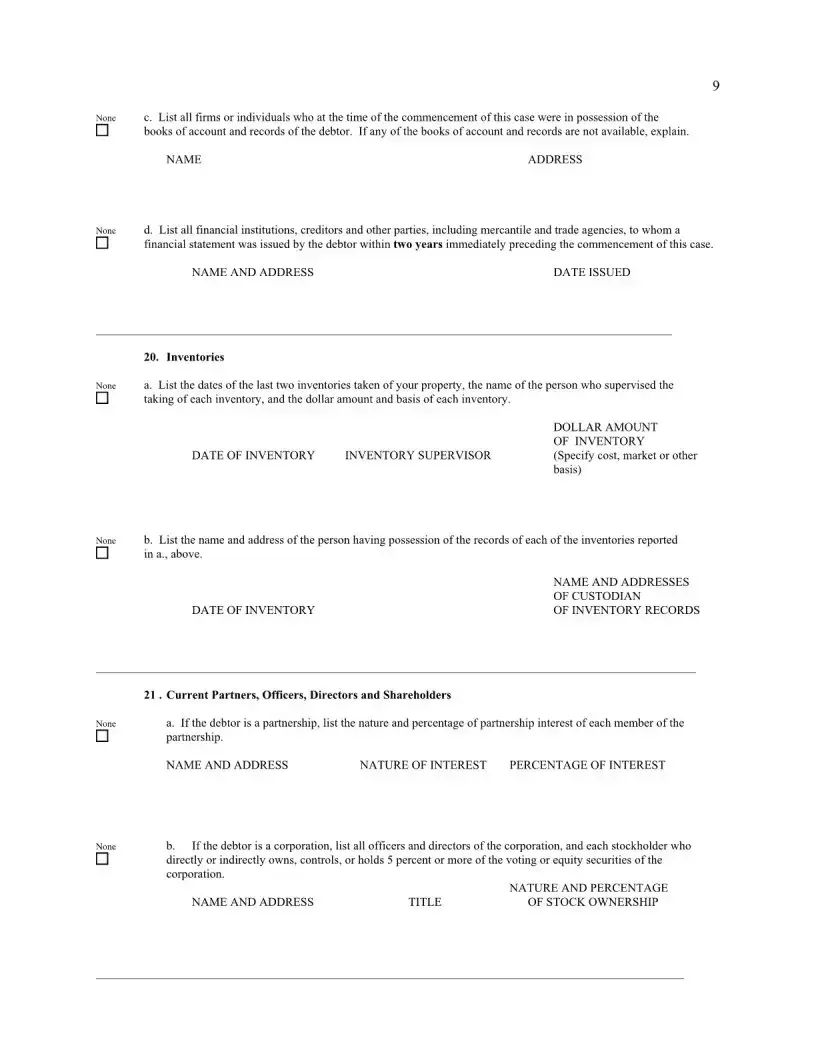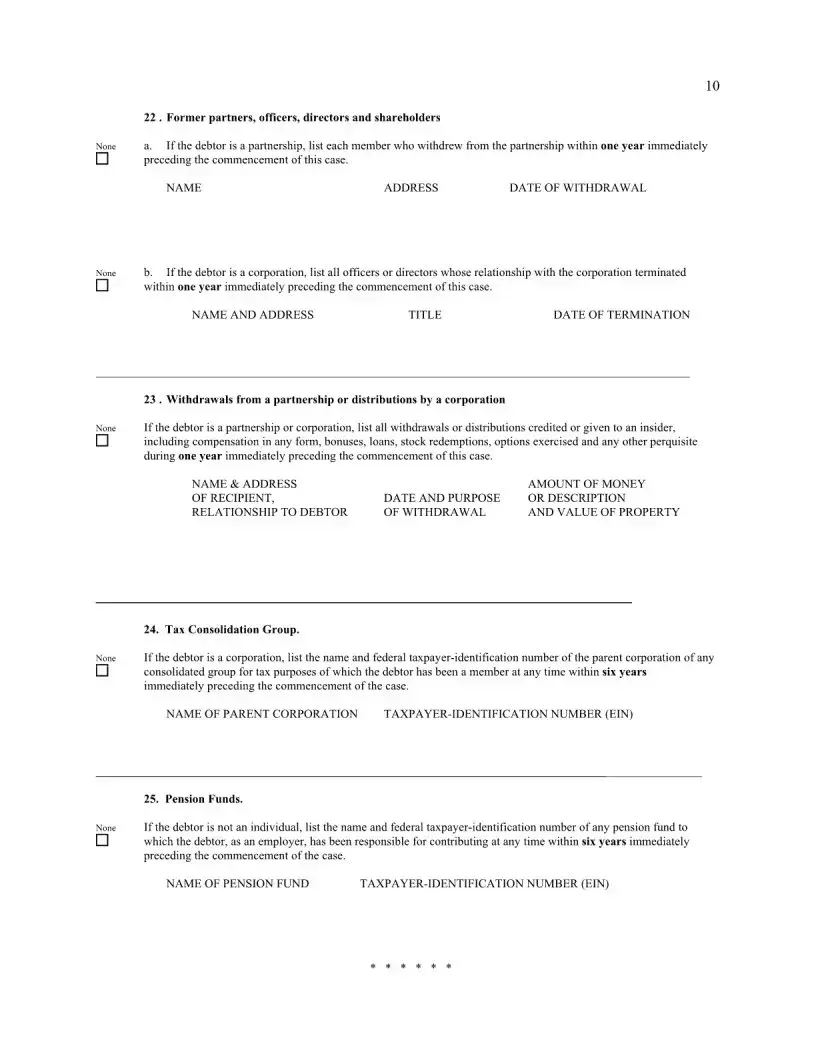What is the purpose of the Statement of Financial Affairs form?
The Statement of Financial Affairs form is designed to gather detailed financial information from debtors filing for bankruptcy. It captures data about income, assets, debts, and financial transactions that may be relevant to the bankruptcy case. This ensures that the court has a clear understanding of the debtor's financial situation, helping to facilitate the bankruptcy process.
Who needs to complete this form?
Every debtor must complete the Statement of Financial Affairs form. If two spouses are filing a joint petition, they may use a single form for both. However, for those filing under chapter 12 or chapter 13, both spouses must provide information, even if a joint petition is not filed, unless they are separated. Business owners must also include information about their business activities alongside personal finances.
What information is included in the form?
The form contains multiple questions covering various aspects of a debtor's financial affairs. This includes income from employment or business, any other sources of income, payments made to creditors, legal actions involving the debtor, and details about property that has been repossessed or foreclosed on. Debtors must provide accurate figures and explanations as required by the form.
What should I do if I need more space for my answers?
If you find that the space provided on the form is insufficient for your responses, you can attach additional sheets. Make sure to clearly identify these sheets with the case name, case number (if known), and the question number you are answering. This will help keep everything organized and ensure that the court can follow your answers easily.
How do I report income from different sources?
The form provides specific sections where you can report income from various sources. For income related to employment or business, include gross amounts received from the beginning of the calendar year up to the date of filing. You should also report income from the two years prior. If a joint petition is filed, the form requires you to list income separately for each spouse unless otherwise specified.
What if I have made payments to creditors recently?
You'll need to provide details on any payments made to creditors in the 90 days before filing. Include the creditor's name and address, dates of payments, amounts paid, and any amounts still owed. Different rules apply depending on whether your debts are primarily consumer-related or not, so follow the instructions for the appropriate section carefully.
What does the term "insider" mean in the context of this form?
An "insider" refers to individuals or entities closely connected to the debtor. This includes relatives, business partners, and significant shareholders. Understanding who qualifies as an insider is important for accurately reporting financial transactions, especially payments made to them before filing for bankruptcy. This helps maintain transparency in the bankruptcy process.
